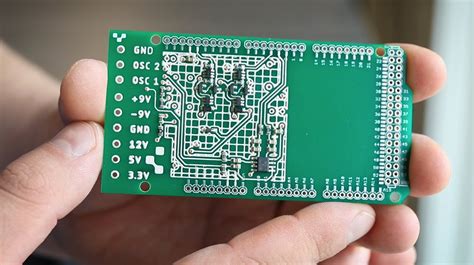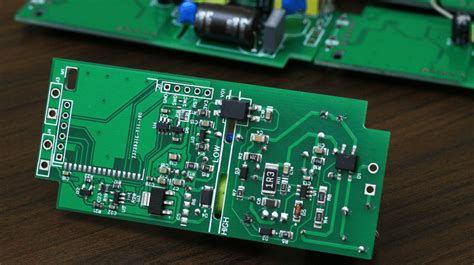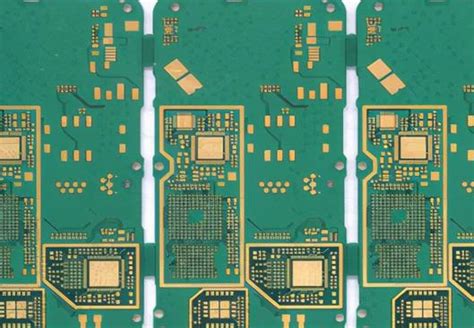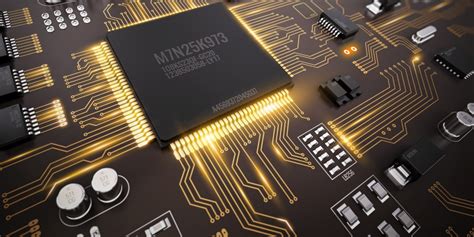Metal core pcb factories
Innovations In Metal Core PCB Manufacturing Techniques
Metal core printed circuit boards (PCBs) have become increasingly significant in the electronics industry due to their superior thermal management capabilities. As electronic devices continue to shrink in size while increasing in power, the demand for efficient heat dissipation solutions has grown. Metal core PCBs, typically composed of a metal base layer such as aluminum or copper, offer a viable solution by effectively dissipating heat away from critical components. Consequently, innovations in metal core PCB manufacturing techniques have become a focal point for factories aiming to meet the evolving needs of the industry.
One of the most notable advancements in this field is the development of improved thermal interface materials.
These materials are crucial in enhancing the thermal conductivity between the metal core and the circuit layers. By optimizing the composition and application of these materials, manufacturers can significantly reduce thermal resistance, thereby improving the overall performance of the PCB. This innovation not only enhances the efficiency of heat transfer but also contributes to the longevity and reliability of electronic devices.
In addition to advancements in thermal interface materials, the precision of drilling and etching processes has seen remarkable improvements.
Modern factories are increasingly adopting laser drilling techniques, which offer higher precision and cleaner cuts compared to traditional mechanical drilling methods. This precision is particularly important in the context of metal core PCBs, where maintaining the integrity of the metal layer is crucial for effective heat dissipation. Furthermore, advancements in etching technology have enabled more intricate circuit designs, allowing for greater functionality without compromising thermal performance.
Another significant innovation is the integration of automated manufacturing processes.
Automation has revolutionized the production of metal core PCBs by enhancing both efficiency and consistency. Automated systems can handle complex tasks with minimal human intervention, reducing the likelihood of errors and ensuring uniformity across large production runs. This not only speeds up the manufacturing process but also reduces costs, making metal core PCBs more accessible to a wider range of applications.
Moreover, the adoption of environmentally friendly practices in metal core PCB manufacturing is gaining traction.
Factories are increasingly focusing on reducing waste and minimizing the environmental impact of their operations. This includes the use of recyclable materials and the implementation of energy-efficient production techniques. By prioritizing sustainability, manufacturers are not only meeting regulatory requirements but also addressing the growing consumer demand for eco-friendly products.
Furthermore, the customization capabilities of metal core PCBs have expanded significantly.
Factories are now able to offer tailored solutions that meet specific thermal and electrical requirements. This is achieved through advanced design software and flexible manufacturing processes that allow for the production of bespoke PCBs. Customization is particularly valuable in industries such as automotive and aerospace, where unique specifications are often required to meet stringent performance standards.
In conclusion, the innovations in metal core PCB manufacturing techniques are driving significant advancements in the electronics industry. From improved thermal interface materials and precision drilling to automation and sustainability, these developments are enhancing the performance, efficiency, and environmental impact of metal core PCBs. As technology continues to evolve, it is likely that further innovations will emerge, solidifying the role of metal core PCBs as a critical component in modern electronic devices. Through these advancements, manufacturers are well-positioned to meet the growing demands of an increasingly sophisticated market.

The Role Of Metal Core PCBs In High-Performance Electronics
Metal core printed circuit boards (PCBs) have emerged as a pivotal component in the realm of high-performance electronics, offering unique advantages that cater to the demanding requirements of modern technological applications. As electronic devices continue to evolve, the need for efficient thermal management and enhanced durability becomes increasingly critical. Metal core PCBs, with their distinctive construction, address these challenges by providing superior heat dissipation and mechanical stability, thereby playing a crucial role in the advancement of high-performance electronics.
At the heart of metal core PCBs is their composition, which typically includes a metal substrate, such as aluminum or copper, sandwiched between layers of dielectric material and copper circuitry.
This configuration is instrumental in facilitating effective thermal management, a key consideration in high-performance electronics where heat generation can significantly impact device functionality and longevity. The metal core acts as a heat sink, efficiently conducting heat away from critical components and dissipating it across the board. This capability not only enhances the reliability of electronic devices but also allows for higher power densities and improved performance.
Moreover, the mechanical robustness of metal core PCBs is another factor that underscores their importance in high-performance applications.
The metal substrate provides a sturdy foundation that enhances the board’s structural integrity, making it less susceptible to mechanical stress and deformation. This is particularly beneficial in applications where electronic devices are exposed to harsh environmental conditions or require a high degree of mechanical resilience. Consequently, metal core PCBs are frequently employed in industries such as automotive, aerospace, and industrial electronics, where reliability and durability are paramount.
In addition to their thermal and mechanical advantages, metal core PCBs also offer design flexibility, which is essential for accommodating the diverse requirements of high-performance electronics.
The ability to tailor the thickness and composition of the metal core allows engineers to optimize the thermal and mechanical properties of the PCB to suit specific applications. This adaptability is crucial in the development of custom solutions that meet the unique demands of cutting-edge technologies.
Furthermore, the role of metal core PCB factories in the production of these advanced components cannot be overstated.
These specialized facilities are equipped with the expertise and technology necessary to manufacture high-quality metal core PCBs that meet stringent industry standards. From the selection of appropriate materials to the implementation of precise manufacturing processes, metal core PCB factories play a vital role in ensuring the performance and reliability of the final product. Their contribution is integral to the supply chain of high-performance electronics, enabling the seamless integration of metal core PCBs into a wide array of applications.

As the demand for high-performance electronics continues to grow, the significance of metal core PCBs is expected to increase correspondingly. Their ability to address critical challenges such as thermal management and mechanical stability positions them as an indispensable component in the development of next-generation electronic devices. In conclusion, metal core PCBs are not only a testament to the advancements in PCB technology but also a key enabler of innovation in high-performance electronics, driving progress across various industries and paving the way for future technological breakthroughs.

Environmental Impact And Sustainability In Metal Core PCB Production
Metal core printed circuit boards (PCBs) have become increasingly popular in various industries due to their superior thermal management capabilities. As the demand for these PCBs grows, it is crucial to examine the environmental impact and sustainability of their production processes. The manufacturing of metal core PCBs involves several stages, each with its own environmental considerations. From the extraction of raw materials to the disposal of waste, every step has implications for the environment. Therefore, understanding these impacts and exploring sustainable practices is essential for minimizing the ecological footprint of metal core PCB production.
To begin with, the extraction and processing of raw materials, such as aluminum or copper, used in metal core PCBs can have significant environmental consequences.
Mining activities often lead to habitat destruction, soil erosion, and water pollution. Additionally, the energy-intensive nature of metal extraction contributes to greenhouse gas emissions. To mitigate these effects, manufacturers are increasingly turning to recycled materials. By using recycled metals, factories can reduce the demand for virgin resources and decrease the overall environmental impact of their operations.
Furthermore, the production process itself involves several chemical treatments and energy-intensive steps.
The use of chemicals in etching and cleaning processes can result in hazardous waste, which poses a risk to both human health and the environment if not properly managed. Implementing closed-loop systems and investing in advanced filtration technologies can help minimize the release of harmful substances into the environment. Moreover, adopting energy-efficient practices, such as utilizing renewable energy sources and optimizing production processes, can significantly reduce the carbon footprint of metal core PCB factories.
In addition to addressing the direct environmental impacts, it is also important to consider the end-of-life phase of metal core PCBs.
Electronic waste is a growing concern globally, and improper disposal of PCBs can lead to the release of toxic substances into the environment. To promote sustainability, manufacturers are encouraged to design products with recyclability in mind. This includes using materials that are easier to separate and recycle, as well as implementing take-back programs to ensure responsible disposal and recycling of used PCBs.
Moreover, collaboration across the supply chain is vital for enhancing sustainability in metal core PCB production.
By working closely with suppliers, manufacturers can ensure that environmentally friendly practices are adopted at every stage of the production process. This includes sourcing materials from suppliers who adhere to sustainable mining practices and implementing stringent environmental standards throughout the supply chain. Additionally, engaging with stakeholders, such as regulatory bodies and non-governmental organizations, can help drive industry-wide initiatives aimed at reducing the environmental impact of PCB production.
In conclusion, while the production of metal core PCBs presents several environmental challenges, there are numerous opportunities for improving sustainability within the industry. By focusing on the responsible sourcing of materials, optimizing production processes, and promoting recycling and proper disposal, manufacturers can significantly reduce their ecological footprint. Furthermore, fostering collaboration across the supply chain and engaging with stakeholders can drive the adoption of sustainable practices on a broader scale. As the demand for metal core PCBs continues to rise, it is imperative for the industry to prioritize environmental impact and sustainability, ensuring that technological advancements do not come at the expense of the planet.

Quality Assurance Practices In Metal Core PCB Factories
In the realm of electronics manufacturing, metal core printed circuit boards (PCBs) have emerged as a pivotal component, particularly in applications requiring efficient heat dissipation. As the demand for these specialized PCBs continues to rise, ensuring the highest quality standards in their production has become paramount. Metal core PCB factories, therefore, employ a range of quality assurance practices to meet the stringent requirements of various industries, including automotive, aerospace, and consumer electronics.
To begin with, the selection of raw materials is a critical step in the quality assurance process.
Factories prioritize sourcing high-grade metal substrates, typically aluminum or copper, which are essential for the thermal management properties of metal core PCBs. By establishing strong relationships with reputable suppliers, manufacturers can ensure a consistent supply of materials that meet predefined specifications. Furthermore, incoming materials are subjected to rigorous inspections to verify their conformity to quality standards, thereby preventing defects from entering the production line.
Once the materials are approved, the manufacturing process itself is closely monitored through a series of standardized procedures.
Advanced machinery and automation play a significant role in maintaining precision and consistency during production. For instance, automated optical inspection (AOI) systems are employed to detect any deviations or defects in the PCBs at various stages of manufacturing. These systems utilize high-resolution cameras and sophisticated algorithms to identify issues such as misalignments, soldering defects, or surface irregularities, allowing for immediate corrective actions.
In addition to automated inspections, human oversight remains an integral part of quality assurance in metal core PCB factories.
Skilled technicians conduct manual inspections and tests to complement automated systems, providing an additional layer of scrutiny. This dual approach ensures that even the most subtle defects are identified and addressed promptly. Moreover, continuous training programs are implemented to keep personnel updated on the latest quality control techniques and industry standards, thereby enhancing their ability to maintain high-quality outputs.
Another crucial aspect of quality assurance is the implementation of environmental and stress testing.
Metal core PCBs are often used in applications where they are exposed to extreme conditions, such as high temperatures or mechanical stress. To simulate these conditions, factories conduct a series of tests, including thermal cycling, vibration testing, and humidity exposure. These tests are designed to evaluate the durability and reliability of the PCBs under real-world conditions, ensuring that they can withstand the demands of their intended applications.
Furthermore, quality assurance practices extend beyond the production floor to encompass comprehensive documentation and traceability systems.
Detailed records of each production batch, including material sources, process parameters, and inspection results, are meticulously maintained. This documentation not only facilitates traceability in the event of a defect but also supports continuous improvement initiatives by providing valuable data for analysis and optimization.
In conclusion, quality assurance in metal core PCB factories is a multifaceted endeavor that encompasses meticulous material selection, advanced manufacturing techniques, rigorous testing, and thorough documentation. By adhering to these practices, manufacturers can deliver products that meet the high standards required by their clients, thereby reinforcing their reputation for reliability and excellence in the competitive electronics market. As technology continues to evolve, these factories remain committed to refining their quality assurance processes, ensuring that they can meet the ever-increasing demands of modern electronic applications.






